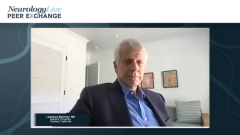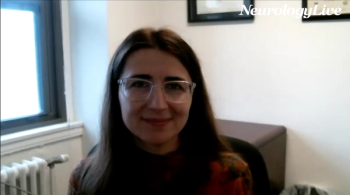
The Role of Epstein-Barr Virus in Autoimmune Diseases
Amit Bar-Or, MD, FRCPC, and Bridget A. Bagert, MD, share their opinions on the role the Epstein-Barr virus plays in the development of multiple sclerosis, highlighting recent publications examining this link.
Episodes in this series

Scott Newsome, DO: Amit, what are your thoughts about the EBV [Epstein-Barr virus] infection in terms of the risk of developing autoimmunity? We can focus attention on MS [multiple sclerosis] and talk about the Harvard [T.H. Chan School of Public Health] group publishing 1 of 2 recent papers.
Amit Bar-Or, MD, FRCPC: One long-standing observation has been that if you wait long enough, eventually everybody will be exposed to EBV, but a minority of people develop multiple sclerosis. EBV has been implicated in several human pathological states—including Burkitt lymphoma—post-transplant proliferation, and several autoimmune diseases—not just MS, but another that’s been touted as having EBV implication is lupus.
The question that comes up is what is it about EBV that may be triggering multiple sclerosis? The evidence from Alberto Ascherio’s group—the paper you were referring to—reinforces work using the very large military database and going back to collect serum from individuals when they joined the army. Following people over time is part of their medical follow-up during their time in the military. One can identify some people who end up with a diagnosis of MS.
You can go back to their early blood samples and measure whether the person has been exposed to various things, including EBV, using a simple serological antibody test. And you can do what’s called nest and control, in which you take a bunch of individuals who didn’t develop MS over the same time but nonetheless have very similar other aspects and demographics, potential risk factors, etc. What this study showed, most compellingly, is that exposure to EBV is associated with a very substantial increased risk of developing multiple sclerosis. Of people who were found to have MS, all but 1 of 800 or so had prior EBV exposure.
The relative risk was 35-fold, which is considerably higher than the risk of implicating smoking in lung cancer, just to put that into perspective. An additional insight from this paper is they also looked at neurofilament, which is a macro of neuroaxonal injury that we’ve become very interested in as a potential biomarker of pathological processes in MS and other diseases where the neuroaxonal bundle is impacted. They showed that you had to have EBV exposure prior to identifying abnormal levels of neurofilament. In terms of the causal link, that puts EBV as a very early event, but exposure seems to be a necessary contributor to the development of multiple sclerosis.
Scott Newsome, DO: I find this very interesting. I had the opportunity to speak to Dr Ascherio about the study, and the cause and effect. This increased risk doesn’t mean that it’s the absolute cause. Bridget, what are your thoughts about EBV and the cause of MS? Is it in isolation? Is it the perfect storm situation I was alluding to before?
Bridget A. Bagert, MD: There is a perfect storm. This study clearly suggests that the Epstein-Barr virus is a necessary step for the development of multiple sclerosis. The magnitude of the effect size is so big, and the quality of the investigation is so high—20 years, in so many people, using western blots. He essentially explored this reverse causation. It was confounding, and he eliminated it. Because there have been so many investigations over many years that corroborate this, there’s a biological plausibility. We know that the Epstein-Barr virus has a tropism from B cells, and that’s the part of the story that we could all talk more about.
We talk about herpesviruses and the nervous system. It affects the nervous system. But the hypothesis now is that it’s an infection of the immune system that perfectly targets the nervous system—that’s the target organ. The B cell is part of the immune system, and we know that Epstein-Barr virus—in the examples of cancer—transforms B cells. But we also know that it can biologically immortalize B cells. We see evidence of immortalized B cells in the meninges, and of these organized lymphoid follicles with germinal centers in the meninges. We’ve seen that for 15 years.
There’s more evidence that there’s an Epstein-Barr virus protein and RNA in some of the structures. I’m convinced, given all the evidence, that it’s a necessary step in the development of multiple sclerosis. There are other examples of where a common virus leads to a rare disease like polio, for example. Poliomyelitis doesn’t develop in everyone who gets poliovirus. Everybody who gets HPV [human papillomavirus] doesn’t develop cervical cancer. Some people do—those are the genetic and other environmental factors. There are other examples that we understand. It’s complicated, and it’s not the easiest thing to communicate to one another or to patients, but there are certainly examples in medicine of this. We should be able to wrap our brains around it.
Scott Newsome, DO: It’s a piece of the puzzle. It’s not the entire puzzle, but it’s a piece of the puzzle that’s necessary to get to the full puzzle.
Trancsript Edited for Clarity
Newsletter
Keep your finger on the pulse of neurology—subscribe to NeurologyLive for expert interviews, new data, and breakthrough treatment updates.










































